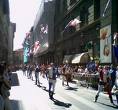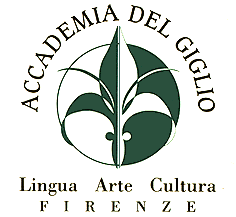 It may not well be known by all that until 1582 for all of European Christianity, the new year did not start on the 1st of January, but on the 25th of March, the day of the Incarnation of the “Verbo divino” and the moment of the announcement of the maternity given by the Archangel to the Virgin Mary.
It may not well be known by all that until 1582 for all of European Christianity, the new year did not start on the 1st of January, but on the 25th of March, the day of the Incarnation of the “Verbo divino” and the moment of the announcement of the maternity given by the Archangel to the Virgin Mary.
In Florence however, where the worship of the Madonna was very sincere, the change, wanted by Pope Gregorius XIII, was not accepted until 1750. This was the year in which finally the grand duke Francesco II di Lorena decided to adopt the Gregorian Calendar (only in England were they more reluctant: they only accepted it in 1752).
 In any case, the Florentine New Year is still loved and celebrated today (and it is still said: “For the annunciation, a swallow arrives; and if one does not arrive, either it is on its way or it is ill”). It might be better to say re-celebrate, seeing that the Community of Florence, re-introduced it from the year 2000 amongst their festivities and celebrate it with the traditional Fair in Piazza Santissima Annunziata (where the basilica dedicated to the Saint Virgin is found and inside the church a so-called miraculous fresco representing the Annunciation by the painter Fra Bartolomeo).
In any case, the Florentine New Year is still loved and celebrated today (and it is still said: “For the annunciation, a swallow arrives; and if one does not arrive, either it is on its way or it is ill”). It might be better to say re-celebrate, seeing that the Community of Florence, re-introduced it from the year 2000 amongst their festivities and celebrate it with the traditional Fair in Piazza Santissima Annunziata (where the basilica dedicated to the Saint Virgin is found and inside the church a so-called miraculous fresco representing the Annunciation by the painter Fra Bartolomeo).
In addition, every year on May 25th a historical procession takes place in the afternoon, which starts from Palagio di Parte Guelfa, moves around all afternoon and finishes at the same piazza.
For a more detailed story, the reading on this page (in Italian) is recommended.
This article has been translated into English by Chloé Carew-Reid, current student of Italian and Art at AdG. The original article in Italian is here.







Commenti recenti